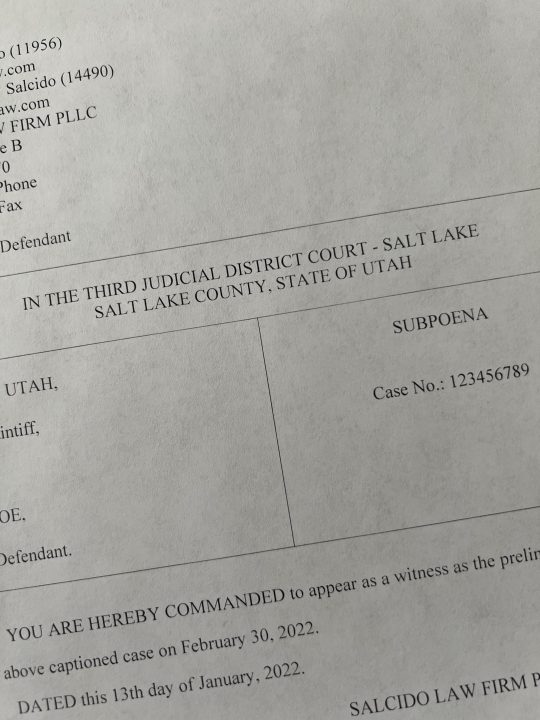When someone is convicted of a felony in Utah the judge typically wants to find out as much about that person as possible before handing down a sentence. This is accomplished through what is called a presentence report or a presentence investigation (PSI).
The presentence investigation is carried out by Adult Probation and Parole, the branch of the Department of Corrections that is responsible for keeping an eye on those who have been released from prison or jail or whose prison/jail time has been stayed.
The Interview Process
The PSI is commenced within 24-48 hours after a criminal defendant pleads guilty to a felony. He will report to an AP&P office and will be given a paper and oral interview.
The paper interview is a list of questions that the defendant needs to complete. The AP&P officer who conducts the oral interview will rely on the defendant’s answers to the written questions in conducting the oral interview.
The Presentence Report
Once the defendant has completed the written and oral interviews, AP&P will put together a presentence report for the judge. The report includes the following sections:
- Recommendations – here AP&P summarizes its recommendations on incarceration time, fines, therapy, and any other special conditions that AP&P believes should be part of the sentence;
- Evaluative Assessment and Problem Areas – here AP&P includes the defendant’s criminal history score, suggested matrix sentence, and the level of services that the defendant would require. AP&P gives a summary of the defendant’s criminal history, employment, education, financial history, family and marital history, his hobbies, his companions, whether he has suffered from substance abuse problems, his general attitude, and his general emotional and personal condition.
- Offense – AP&P gives the judge a summary of the evidence supporting the offense charged, the plea agreement, the defendant’s ability to take responsibility for the offense, and other relevant facts relating to the criminal charges.
- Criminal history – whether defendant has any prior convictions.
- Victim impact statement and restitution – this is a summary of how the offense has injured any victims and how those victims may be made whole by defendant, if possible.
- Defendant’s life history and current living situation – does the defendant have supportive family members and friends? Is he religious? What types of things does the defendant enjoy doing in his life? Etc.
- Substance abuse history – the judge wants to know whether the defendant has struggled with addictions.
- Collateral contacts – the judge is interested to know what defendant’s family and friends have to say about him.
- Aggravating and mitigating factors – are there any factors that would allow the judge to increase or decrease the applicable incarceration period?
- Various forms – there are a number of forms that are attached to the presentence report that provide an assessment for determining incarceration time and probation time.
Using the Presentence Report at Sentencing
A copy of the presentence report is served on defense counsel, the prosecutor, and the judge a few days before the sentencing hearing. Each of the parties is provided an opportunity to respond to the report, to disagree with it, to submit on its findings, or to add to its findings. The judge can consider anything in the report in setting forth his sentence.
Ultimately the presentence report is the single most important thing considered in any felony sentence so defendants and their attorneys need to be intimately familiar with the report and ready to rebut its findings if needed.




